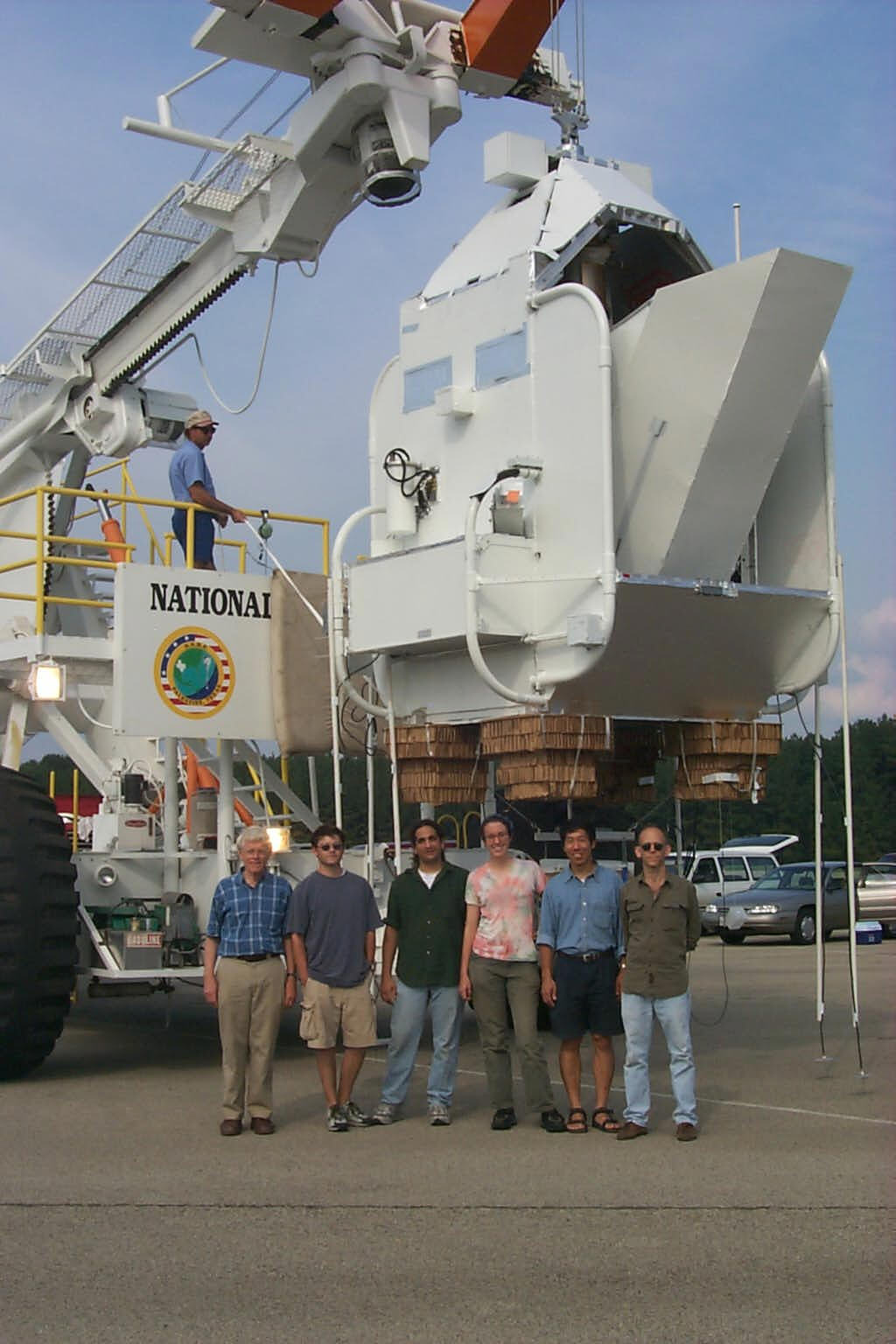
Measuring the Polarization Anisotropy of the Cosmic Microwave Background

Measuring the Polarization Anisotropy of the Cosmic Microwave Background

June 1999: MAXIMA-2 at the National Scientific Ballooning Facility in Palestine, Texas
We plan to launch two balloon flights (starting in Spring 2002) to search for the polarization anisotropy of the cosmic microwave background (CMB). The discovery of CMB polarization anisotropy promises to provide a fundamental confirmation of the cosmological interpretation of the origin of CMB temperature anisotropy. Such a discovery will only be the first step. Eventually a full characterization of CMB polarization anisotropy will test inflation, measure when reionization occured, and significantly increase the accuracy with which the cosmological parameters can be determined. Many believe that a dedicated polarization anisotropy mission will eventually be required to fully exploit this important source of cosmological information.
The proposed flight program, MAXIPOL, will be based on the flight-proven MAXIMA instrument, which is being used to measure temperature anisotropy in the CMB (MAXIMA-2, pictured above and below, flew in June of 1999). MAXIMA has the highest reported sensitivity of any CMB receiver and will require only modest modifications to make it polarization sensitive. Hardware details can be found by following the provided links (left). The instrument's high sensitivity and strong rejection of systematic effects should allow us to detect the CMB polarization anisotropy given the signal level predicted by current cosmologies. MAXIPOL's ability to detect the polarization anisotropy is similar to that of NASA's MAP.
A substantial amount of information about the polarization of the galactic foregrounds at frequencies between 150 and 410 GHz will be obtained. Thus, MAXIPOL will complement MAP's frequency coverage. The MAXIPOL instrument is similar to the Planck/HFI, and it will provide valuable information early enough to influence the HFI design and operation.

MAXIMA-2 Hardware Team, June 1999